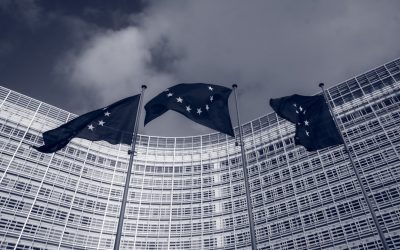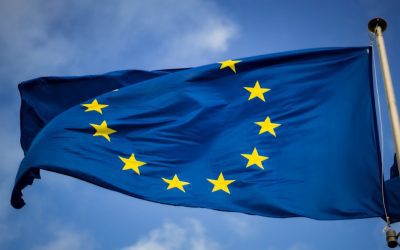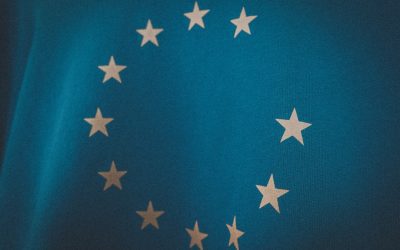World Geography
Geography is the study of the Earth’s landscapes, environments, and the relationships between people and their surroundings. It encompasses both the physical aspects of the Earth, such as its landforms, bodies of water, and climate, as well as the human aspects, including population distribution, cultures, and economies. World geography is a broad field that seeks to understand the complexities of our planet and how humans interact with it. By studying world geography, we can gain a deeper appreciation for the diversity of our planet and the interconnectedness of its various regions.
Geography is a multidisciplinary field that draws on elements of physical science, social science, and humanities. It involves the use of maps, spatial analysis, and geographic information systems (GIS) to understand the Earth’s surface and the processes that shape it. World geography also encompasses the study of human geography, which examines the ways in which people and their activities are distributed across the Earth. By understanding world geography, we can better appreciate the environmental, cultural, and economic challenges facing different regions of the world. This knowledge is crucial for addressing global issues such as climate change, resource management, and international development.
The Five Oceans and Seven Continents
The Earth’s surface is divided into five major oceans: the Pacific, Atlantic, Indian, Southern (or Antarctic), and Arctic Oceans. These vast bodies of water play a crucial role in regulating the Earth’s climate and supporting diverse marine ecosystems. The oceans also serve as important transportation routes and a source of food and other natural resources for human societies around the world.
In addition to the oceans, the Earth’s landmasses are divided into seven continents: Africa, Antarctica, Asia, Europe, North America, Australia (or Oceania), and South America. Each continent has its own unique physical and cultural characteristics, shaped by millions of years of geological processes and human history. From the deserts of Africa to the rainforests of South America, the continents offer a rich tapestry of landscapes and environments for exploration and study.
Major Mountain Ranges and Deserts
The Earth’s surface is also marked by major mountain ranges and deserts that have shaped the planet’s physical and cultural landscapes. The Himalayas, for example, are the highest mountain range in the world and are home to diverse ecosystems and cultures in countries such as India, Nepal, and Bhutan. The Andes in South America, the Rockies in North America, and the Alps in Europe are other prominent mountain ranges that have influenced human settlement patterns and economic activities.
Deserts cover about one-third of the Earth’s land surface and are characterized by low precipitation and extreme temperatures. The Sahara Desert in Africa is the largest hot desert in the world, while the Gobi Desert in Asia is one of the largest cold deserts. Deserts are not only home to unique flora and fauna but have also been important trade routes and cultural crossroads throughout history.
Climate Zones and Biomes
The Earth’s climate is influenced by a variety of factors, including latitude, altitude, ocean currents, and prevailing winds. As a result, the planet is divided into different climate zones, each with its own characteristic weather patterns and ecosystems. The equator, for example, experiences a tropical climate with high temperatures and heavy rainfall, while the polar regions have a cold and dry climate.
These climate zones give rise to different biomes, or large ecological areas characterized by distinct plant and animal communities. The tropical rainforest biome, found near the equator, is home to a diverse array of species and is vital for regulating the Earth’s climate. The grasslands biome, found in regions such as the African savannah and North American prairies, supports grazing animals and has been important for human agriculture throughout history.
Human Geography and Population Distribution
Human geography examines the ways in which people and their activities are distributed across the Earth’s surface. It encompasses topics such as population growth, migration patterns, urbanization, and cultural diversity. Understanding human geography is crucial for addressing global challenges such as poverty, inequality, and environmental degradation.
Population distribution is uneven across the world, with some regions experiencing rapid population growth while others are declining. The majority of the world’s population lives in Asia, particularly in countries such as China and India. Urban areas are also growing rapidly, with more than half of the world’s population now living in cities. This trend has significant implications for infrastructure development, resource management, and social inequality.
Historical and Cultural Geography
Historical geography examines how human activities have shaped the Earth’s landscapes over time. It explores topics such as colonialism, trade routes, and the rise and fall of empires. Cultural geography focuses on how human cultures have developed in different regions of the world and how they interact with their environments.
The Silk Road, for example, was an ancient trade route that connected China with Europe and facilitated the exchange of goods, ideas, and technologies across Eurasia. This historical trade route had a profound impact on the development of cultures and economies along its path. Similarly, cultural geographers study how different societies have adapted to their environments through practices such as agriculture, architecture, and religious beliefs.
The Importance of Geographic Knowledge
Geographic knowledge is crucial for addressing global challenges such as climate change, resource management, and international development. By understanding world geography, we can better appreciate the environmental, cultural, and economic challenges facing different regions of the world. This knowledge is crucial for addressing global issues such as climate change, resource management, and international development.
Geographic knowledge also helps us to understand our interconnectedness with other regions of the world. By studying world geography, we can gain a deeper appreciation for the diversity of our planet and the interconnectedness of its various regions. This understanding can foster a sense of global citizenship and empathy for people from different cultures and backgrounds.
In conclusion, world geography is a complex and multifaceted field that encompasses both physical and human aspects of the Earth’s landscapes. By studying world geography, we can gain a deeper appreciation for the diversity of our planet and the interconnectedness of its various regions. This knowledge is crucial for addressing global challenges such as climate change, resource management, and international development. It also helps us to understand our interconnectedness with other regions of the world and fosters a sense of global citizenship.
FAQs
What is world geography?
World geography is the study of the Earth’s landscapes, environments, and the relationships between people and their environments. It encompasses the physical features of the Earth, as well as the human activity that takes place on it.
Why is world geography important?
World geography is important because it helps us understand the world around us. It provides insights into the physical and human processes that shape our planet, and helps us make informed decisions about how to interact with our environment.
What are the main branches of world geography?
The main branches of world geography include physical geography, which focuses on the Earth’s natural features and processes, and human geography, which examines the relationships between people and their environments.
How does world geography impact our daily lives?
World geography impacts our daily lives in numerous ways, from influencing the weather and climate we experience, to shaping the availability of natural resources and influencing the distribution of populations and cultures around the world.
What are some key concepts in world geography?
Key concepts in world geography include location, place, human-environment interaction, movement, and region. These concepts help geographers understand and interpret the world around them.
Germany’s Pivotal Role in Shaping European Defense Strategies
Germany’s historical role in European defense is deeply intertwined with the continent’s tumultuous past, particularly during the 20th century. The aftermath of World War I saw the Treaty of Versailles impose severe restrictions on Germany’s military capabilities, which were intended to prevent future aggression. However, these limitations inadvertently contributed to the rise of militarism and nationalism within Germany, culminating in World War Summary Germany has historically played a significant role in European defense, particularly during the World Wars and the Cold War era. Currently, Germany is a key player in European defense, with a strong emphasis on multilateral cooperation and diplomacy. Germany’s influence on European defense policies is evident through its commitment to NATO and its active participation in EU defense initiatives. Germany’s military capabilities and contributions to European security are substantial, with a focus on modernization and interoperability with other European forces. Germany plays a crucial role in shaping NATO’s defense strategies, particularly in terms of its commitment to collective defense and deterrence measures. The devastation wrought by this conflict led to a profound reassessment of Germany’s military posture and its role in European security. Post-war, Germany was divided into East and West, with West Germany becoming a key player in NATO, while East Germany aligned with the Warsaw Pact. This division not only shaped Germany’s military identity but also influenced the broader dynamics of European defence during the Cold War. The reunification of Germany in 1990 marked a significant turning point in its historical role in European defence. As a unified nation, Germany emerged as a central actor in European security architecture, advocating for a multilateral approach...
The Rise of a European Army: Prospects and Challenges Ahead
The roots of European defence cooperation can be traced back to the aftermath of the Second World War, a period marked by a profound desire for peace and stability on the continent. The establishment of the Western European Union (WEU) in 1954 was one of the earliest attempts to foster collective security among European nations. This initiative aimed to integrate military capabilities and ensure mutual defence, reflecting the lessons learned from the devastating conflicts of the first half of the 20th century.However, it was not until the Cold War that the urgency for a cohesive defence strategy became paramount, as Europe found itself divided between NATO and the Warsaw Pact. The end of the Cold War in 1991 ushered in a new era for European defence cooperation, as the threat of Soviet expansion receded. The Maastricht Treaty of 1992 laid the groundwork for the European Union’s Common Foreign and Security Policy (CFSP), which included provisions for a common defence policy. The establishment of the European Security and Defence Policy (ESDP) in 1999 marked a significant milestone, enabling the EU to undertake military operations and crisis management missions independently of NATO. This evolution reflected a growing recognition among European nations that collective security was essential for addressing emerging threats, such as terrorism, cyber warfare, and regional conflicts. Summary European defence cooperation has evolved over time, from the formation of the Western European Union to the establishment of the Common Security and Defence Policy. The establishment of a European army could have significant political implications for EU member states, potentially leading to a more unified and coordinated approach to defence and...
The Impact of U.S. Policy Changes on EU Defense Posture
In recent years, the geopolitical landscape has undergone significant transformations, particularly in the context of U. S. foreign policy and its implications for European defence. The United States, traditionally viewed as a cornerstone of European security through NATO, has shifted its focus towards a more unilateral approach, raising questions about the future of transatlantic relations and the security architecture in Europe. This shift has prompted the European Union (EU) to reassess its defence posture, leading to a more pronounced emphasis on strategic autonomy and military readiness. The evolving dynamics between the U.S. and EU are not merely a matter of policy adjustment; they represent a fundamental rethinking of how security is conceptualised and operationalised in Europe. The implications of these U.S. policy changes are manifold, affecting not only military spending and capabilities but also the broader framework of international alliances. As the U.S. pivots towards addressing challenges in the Indo-Pacific region and adopts a more transactional approach to its alliances, European nations find themselves at a crossroads. The EU’s response to these shifts is critical, as it seeks to maintain its security interests while navigating the complexities of a changing global order. This article will explore the multifaceted effects of U.S. policy changes on EU military spending, NATO relations, defence capabilities, and the broader implications for global security. The shifting priorities of U.S. foreign policy have had a direct impact on military spending across Europe. As the U.S. has signalled a reduced commitment to European security, many EU member states have felt compelled to increase their defence budgets in response to perceived threats from Russia and other geopolitical challenges....
Financial Implications of the EU’s Massive Defense Spending Plans
In recent years, the European Union has increasingly recognised the necessity of bolstering its defence capabilities in response to a rapidly changing global security landscape. The geopolitical tensions stemming from various sources, including the resurgence of aggressive posturing by Russia, the instability in the Middle East, and the rise of non-state actors, have prompted EU member states to reassess their military readiness and strategic autonomy. As a result, the EU has unveiled ambitious plans to enhance defence spending, aiming to create a more cohesive and capable military force that can operate independently or alongside NATO. The European Defence Fund (EDF) is a cornerstone of these plans, designed to foster collaboration among member states in developing defence technologies and capabilities. The EDF aims to allocate substantial financial resources to joint projects, thereby reducing duplication of efforts and enhancing efficiency. This initiative not only seeks to strengthen the EU’s military capabilities but also aims to stimulate innovation within the defence sector, ensuring that Europe remains at the forefront of technological advancements in military applications. As these plans unfold, they will have far-reaching implications for national budgets, economic growth, and the overall stability of the region. Summary The EU’s defense spending plans aim to increase military capabilities and cooperation among member states. Increased defense spending may put pressure on national budgets and contribute to higher deficits for some countries. The defense industry stands to benefit economically from increased EU spending, with potential for job creation and technological advancements. Taxpayers and consumers may face increased costs as a result of higher defense spending, impacting household budgets and spending habits. The EU’s defense spending...
Strategic Autonomy: The EU’s Path to Independent Military Capability
Strategic autonomy has emerged as a pivotal concept within the European Union’s discourse on defence and security. It encapsulates the EU’s aspiration to develop a military capability that allows it to act independently in the face of global challenges, without over-reliance on external powers, particularly the United States. This vision is rooted in the recognition that the geopolitical landscape has shifted dramatically, with new threats such as cyber warfare, terrorism, and hybrid conflicts necessitating a more robust and agile military response. The EU’s strategic autonomy is not merely about military might; it also encompasses political will, operational readiness, and the ability to make decisions free from external influence. The EU’s commitment to strategic autonomy is reflected in various initiatives and frameworks, such as the Permanent Structured Cooperation (PESCO) and the European Defence Fund (EDF). These mechanisms aim to enhance collaboration among member states in defence capabilities, research, and procurement. By pooling resources and expertise, the EU seeks to create a more cohesive and capable military force that can respond effectively to crises. This vision is further reinforced by the EU’s Global Strategy, which outlines a comprehensive approach to security that integrates military and civilian tools, thereby ensuring that the EU can act decisively on the global stage. Summary The EU’s vision for military capability involves achieving strategic autonomy, allowing it to act independently in defence and security matters. NATO and the EU play complementary roles in European security, with NATO focusing on collective defence and the EU on crisis management and conflict prevention. Challenges in achieving strategic autonomy include limited defence budgets, fragmented defence industries, and differing national priorities....
ReArm Europe: Understanding the EU’s €800 Billion Defense Initiative
In the wake of escalating geopolitical tensions and the shifting landscape of global security, the European Union has embarked on a significant initiative known as ReArm Europe. This ambitious programme is designed to bolster the military capabilities of EU member states, ensuring that Europe can respond effectively to emerging threats. The initiative is not merely a reaction to current events; it represents a strategic pivot towards a more autonomous and robust European defence posture. As the world witnesses a resurgence of state-based conflicts and hybrid warfare tactics, the need for a cohesive and well-equipped European military framework has never been more pressing. ReArm Europe is set against a backdrop of increasing military expenditure across the continent, driven by the recognition that traditional security alliances may not suffice in addressing contemporary challenges. The initiative aims to unify the defence strategies of EU member states, fostering collaboration and interoperability among their armed forces. By pooling resources and sharing technological advancements, Europe seeks to create a formidable defence apparatus that can operate independently or in conjunction with NATO forces. This article delves into the intricacies of ReArm Europe, exploring its objectives, implications for security, and the broader context within which it operates. Summary ReArm Europe is a significant defence initiative aimed at strengthening European security and defence capabilities. The EU’s €800 billion defence initiative seeks to enhance military capabilities, invest in research and development, and promote cooperation among member states. The purpose of ReArm Europe is to reduce reliance on external military support and increase Europe’s autonomy in defence and security matters. ReArm Europe is expected to have a positive impact on...
Collective Security: The Future of EU’s Defense Collaborations
Collective security is a foundational principle in international relations, predicated on the idea that an attack against one member of a collective is an attack against all. This concept emerged in the aftermath of the First World War, as nations sought to prevent future conflicts through mutual agreements and alliances. The League of Nations was one of the first attempts to institutionalise this principle, although it ultimately failed to prevent the outbreak of the Second World War. In contemporary times, collective security has evolved, particularly within the framework of organisations such as the United Nations and regional alliances like the European Union (EU) and the North Atlantic Treaty Organization (NATO). The EU’s approach to collective security is particularly significant given its unique political and economic landscape. The integration of member states into a cohesive political entity has necessitated a rethinking of traditional security paradigms. The EU’s collective security strategy is not merely about military alliances; it encompasses a broader understanding of security that includes economic stability, political cooperation, and social cohesion. This multifaceted approach aims to address both conventional military threats and non-traditional security challenges, such as cyber threats, terrorism, and climate change. As the global security environment becomes increasingly complex, the importance of collective security within the EU framework cannot be overstated. Summary Collective security is a concept where countries work together to ensure the security of all members, with the belief that an attack on one is an attack on all. The EU’s current defense collaborations include initiatives such as the European Defence Agency and the Permanent Structured Cooperation, aimed at enhancing military capabilities and cooperation among...
Navigating NATO and EU Defense Dynamics in a Changing World
The North Atlantic Treaty Organization (NATO) and the European Union (EU) have undergone significant transformations since their inception, reflecting the changing geopolitical landscape of Europe and beyond. NATO was established in 1949 as a collective defence alliance primarily aimed at countering the Soviet threat during the Cold War. Its foundational principle, enshrined in Article 5 of the North Atlantic Treaty, asserts that an armed attack against one member is considered an attack against all. This principle has been pivotal in shaping NATO’s strategic posture and operational framework, leading to a series of military interventions and peacekeeping missions in various global hotspots. In contrast, the EU’s defence policy has evolved more gradually, initially focusing on economic integration and political cooperation. The Maastricht Treaty of 1992 marked a significant turning point, establishing the Common Foreign and Security Policy (CFSP) and later the European Security and Defence Policy (ESDP). The EU’s approach to defence has been characterised by a desire to enhance its capacity for crisis management and conflict prevention, often through civilian missions and humanitarian efforts. Over the years, the EU has sought to develop its own military capabilities, culminating in initiatives such as the Permanent Structured Cooperation (PESCO) and the European Defence Fund (EDF), which aim to bolster member states’ defence capabilities and foster greater collaboration. Summary NATO and EU defense policies have evolved significantly over the years, adapting to changing global security challenges and geopolitical shifts. Both NATO and EU play crucial roles in global security, with NATO focusing on collective defense and crisis management, and the EU on civilian and military missions. NATO and EU face various challenges...
Brexit Aftermath: How Brexit continues to impact both the UK and EU economies, travel, and diplomacy.
The economic ramifications of the UK’s decision to leave the European Union have been profound and multifaceted, affecting both the UK and EU economies in significant ways. Initially, the uncertainty surrounding Brexit led to a sharp decline in the value of the British pound, which fell to its lowest level against the dollar in over three decades. This depreciation made imports more expensive, contributing to inflationary pressures within the UK. As a result, consumers faced higher prices for goods and services, which in turn affected spending patterns and overall economic growth. The Bank of England responded by adjusting interest rates to mitigate these inflationary effects, but the long-term consequences of these economic shifts remain a topic of intense debate. On the other side of the Channel, the EU also experienced economic turbulence as a result of Brexit. The departure of one of its largest economies raised concerns about the stability of the single market. Countries that had strong trade ties with the UK, such as Ireland and the Netherlands, faced immediate challenges as they navigated new trade barriers and regulatory hurdles. The EU’s budget was also impacted, as the UK had been a significant net contributor. This necessitated adjustments in funding allocations for various programmes, leading to potential shortfalls in areas such as agriculture and regional development. The economic landscape in both regions has been irrevocably altered, with businesses and governments alike grappling with the new realities of a post-Brexit world. Summary Economic impact on the UK and EU: Uncertainty and potential trade disruptions are causing concern for businesses and investors in both the UK and EU. Travel restrictions...
EU Enlargement: The path to membership — countries waiting in line (like Ukraine, Moldova, and the Western Balkans) and the political hurdles they face.
The process of European Union (EU) enlargement has been a defining feature of the organisation since its inception. It represents not only a geographical expansion but also a deepening of political, economic, and social ties among member states. The EU has grown from six founding members in 1957 to twenty-seven today, with each enlargement wave reflecting a complex interplay of historical, cultural, and economic factors. The motivations behind enlargement are multifaceted, encompassing the desire for stability, security, and prosperity in Europe, particularly following the end of the Cold War. The integration of new member states is seen as a means to promote peace and democracy, as well as to enhance the EU’s global standing. As the EU continues to consider new candidates for membership, the process remains fraught with challenges and opportunities. The criteria for accession are stringent, requiring candidate countries to align their political and economic systems with those of the EU. This alignment is not merely a bureaucratic exercise; it involves significant reforms in governance, the rule of law, human rights, and economic policies. The ongoing discussions surrounding potential new members, particularly Ukraine, Moldova, and the Western Balkans, highlight the dynamic nature of EU enlargement and its implications for both the EU and the candidate countries. Summary EU enlargement has been a key aspect of the European Union’s development, aiming to bring stability and prosperity to new member states. Ukraine faces both opportunities and challenges in its path towards EU membership, including the need for significant reforms and addressing the conflict in the eastern regions. Moldova has made progress towards EU membership, but obstacles such as corruption...
Digital Europe: The EU’s strategy for digital transformation, including AI regulation, data privacy (GDPR), and tech innovation.
Digital Europe represents a comprehensive initiative by the European Union aimed at harnessing the potential of digital technologies to enhance economic growth, social inclusion, and overall quality of life across member states. This strategy is not merely a response to the rapid technological advancements of the 21st century; it is a proactive framework designed to ensure that Europe remains competitive in a global digital economy. The Digital Europe programme, launched in 2021, allocates significant funding to support projects that promote digital transformation in various sectors, including healthcare, education, and public services. By investing in digital infrastructure, the EU aims to create a robust ecosystem that fosters innovation and collaboration among businesses, governments, and citizens. At the heart of this strategy lies the ambition to create a digitally empowered society where technology serves as a catalyst for positive change. The EU’s vision encompasses not only the development of cutting-edge technologies but also the establishment of ethical guidelines and regulatory frameworks that govern their use. This dual focus on innovation and regulation is crucial in addressing the challenges posed by rapid technological advancements, such as data privacy concerns and the ethical implications of artificial intelligence. As Europe embarks on this digital journey, it seeks to position itself as a leader in responsible digital transformation, ensuring that the benefits of technology are accessible to all while safeguarding fundamental rights. Summary The EU’s strategy for digital transformation aims to drive economic growth, improve citizens’ quality of life, and ensure Europe’s global competitiveness. The EU’s approach to managing artificial intelligence involves creating a regulatory framework that promotes innovation while addressing ethical and legal concerns....
Common Security and Defense Policy (CSDP): The EU’s role in global security, military cooperation, and responses to conflicts like Ukraine.
The Common Security and Defence Policy (CSDP) is a pivotal component of the European Union’s broader foreign policy framework, designed to enhance the EU’s ability to respond to security challenges and crises. Established under the Maastricht Treaty in 1993, the CSDP has evolved significantly over the years, reflecting the changing landscape of global security. It aims to provide the EU with a coherent and unified approach to defence and security, enabling member states to collaborate on military and civilian missions. The CSDP is not merely a military initiative; it encompasses a wide range of activities, including crisis management, conflict prevention, and peacekeeping operations. The CSDP operates within the framework of the EU’s overarching goal of promoting peace, stability, and security in Europe and beyond. It is underpinned by the principle of solidarity among member states, which obliges them to support one another in times of crisis. This collective approach is particularly significant in an era marked by complex security threats, such as terrorism, cyber-attacks, and hybrid warfare. The CSDP seeks to enhance the EU’s strategic autonomy while fostering cooperation with international partners, including NATO and the United Nations. As such, it plays a crucial role in shaping the EU’s identity as a global actor in security and defence matters. Summary The Common Security and Defense Policy (CSDP) is a key component of the European Union’s (EU) efforts to address security challenges. The EU plays a significant role in global security and its actions have a direct impact on international relations. Military cooperation within the CSDP is essential in addressing security threats, but its effectiveness can be limited by various...











